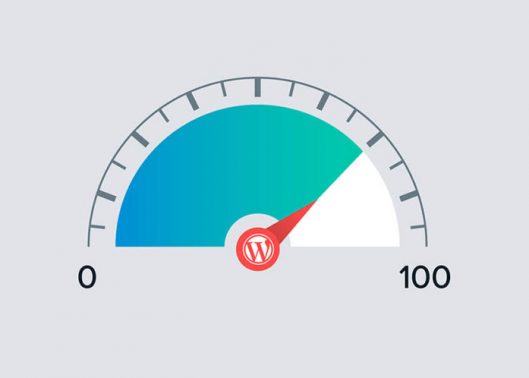Websites have become a cornerstone for meeting most business and personal needs in today’s technologically advanced world. Businesses highly rely on websites to create their brand presence and establish brand value, while people rely on business websites to connect and engage with the brands and have satisfying experiences. So, having a corporate business website has become a must in today’s competitive business environment.
In fact, most businesses have a full-functional, feature-rich business website and that’s evident from the lakhs and millions of websites floating over the web. Additionally, the trend is towards highly user-friendly websites and keeping with the same, most organizations prefer using content management systems for web development and are mostly inclined to taking WordPress Development Services. Statistics reveal that more than 35% of the business websites are powered by WordPress and it’s all accredited to the highly responsive and friendly features and functionalities offered by the platform.
However, even with a good WordPress website, there are huge possibilities that it may be lacking the basic user experiences which ultimately makes you struggle for having the expected traffic and responses on the website. But what can possibly hinder the user experiences on your website? Well, one major aspect is the website accessibility.

What is Website Accessibility?
Website Accessibility, put in very simple terms, means the ease of use and navigation on the website. It refers to the experiences that a website is putting forth for its users, and users here includes those who are challenged with certain disabilities.
The idea is only to make websites a fulfilling experience for all. If a website can’t accommodate the needs and requirements of those who struggle with disabilities, it’s losing a significant amount of traffic and that ultimately means the business losing a very significant number of customers. Therefore, website accessibility is an imperative.
Moreover, with great website accessibility, it’s easier to cater to the most amazing user experiences. Not only will the website be great for those with disabilities, but it will serve as a much better space to other website users as well. So, you’ve got everything to gain and fairly nothing to lose.
But the question is, how to achieve this much needed website accessibility? Well, answer to this can be very simple and detailed. So, let’s get to that.
How to Achieve and Enhance Website Accessibility?
Website Accessibility simply means catering to brilliant user experiences by providing amazing ease of use and understanding on a website. When it comes to achieving the same, there are several functionalities that become a must-have in the website.
With the right integration of features and functionalities in a WordPress website, the accessibility comes handy. So, what features, functionalities, and characteristics are really needed? Well, let’s peek into what it takes!
- Design the Website Themes with an Amazing Color Contrast
The theme of a website is what sets its appearance and appeal and you always want it to be alluring so that it instantly attracts the users. So, it’s natural to use fancy colors and contrasts. However, it’s equally important to be thoughtful about the accessibility of these colors to the users.
Statistics reveal that almost 4.5% of the audience visiting a website is colorblind. It’s necessary to take this into account and keep color contrasts that are attractive as well as legibly visible. There has to be a good contrast and balance between the backgrounds and text colors so that the content is readable and understandable.
- Responsiveness of the Website
The world is on the mobile phones. Today, people like things very handy and be it a website, blog, or an application, the first instinct is to browse them through the mobile phones. In that case, if a website doesn’t support good mobile views, that’s a big slap on its user-friendliness and you can expect the visitors to leave much earlier than they came.
The responsiveness of a website plays major role in keeping it accessible and user-friendly and is something that must never be overlooked. A good thing about WordPress Development is that it has readily available responsive features. However, you still need to work them up so that they can deliver the best capabilities.
When working on web development, it’s important to check that the website works alike on every screen, desktop, laptop, mobile phones, or tablets. With this assurance, a website is well notched up for higher accessibility.
- Never Let the Links Mix/Vanish Within the Entire Text
Usually, links on a webpage are underlined. However, from the appearance point of view, the latest trends point on removing the underline considering the aesthetics of the content. But as you eliminate the underline, the links can easily get mixed up with the entire content and it’d be difficult for the users to understand the existence of a hyperlink within the texts.
In case the links vanish between the content of the webpages, the users can get an impression that the website doesn’t have lot of information, knowledge, or insights to offer, and that really doesn’t work well from the accessibility and user-experience point of view.
So, while you want to keep the aesthetics of the content on webpages intact, it’s equally necessary that the links are placed very conspicuously on those pages. As such, highlighting the links with a user-friendly color or simply bolding them from the rest of the text works as a good strategy to prevent the links from being a lost cause.
[contact-form-7 id=”1261″ title=”single blog form”]- Offer Seamless Navigation
How the users are able to navigate through the website is very important to create great experiences over it. The users would probably not want to keep scrolling through the page before they can finally find the content that they’ve exactly been looking for.
As you place the content on the website, you make sure that it’s divided well in different headings and subheadings. Now, different titles, headings, subheadings, or particular sections of a webpage can be relevant to different audiences and they are absolutely keen on reaching that relevant part of the content in an instant.
So, providing a good navigation where the users can easily skip to the main part of the content that’s relevant to their needs and requirements works as a great way to offer better accessibility and excellent user experiences.
- A Good Usage of Image Alt Text
Using the Image Alt Text does a lot for enhancing the accessibility on a webpage. Suppose a particular image on the website is not loading due to some speed issues, internet issues, etc. In such a case, the users can be left clueless about that section in the webpage.
However, just adding an Alt Text to the image can overcome the issue. With an Image Alt Text, you’re providing the users a description of the image that’s placed on that part of the webpage. That description definitely gives the users a raw idea about what’s contained in the image and they can build an understanding through their imagination.
Moreover, adding alt text is favorable from the SEO point of view as well. The crawlers don’t read the images, but the text that accompanies them. So, with the right keywords in the alt text, the images can be more SEO friendly as well and that works great for bringing more traffic to the website.
- Structure the Content Well
How the content is put up in the entire setting of the website again keeps importance for the aesthetic appeal and appearance of a webpage. As such it’s essential to structure the content well on the website to keep it user-friendly and accessible.
Generally, the users decide to stay on the website by scanning the content available on it. If the content is easily visible and readable to them, they stay, else, you can expect to have some great bounce rates. So, keep the content well-structured by dividing it into lines and paragraphs. Use headings, titles, subheadings, and paragraphs wherever needed. There’s a whole lot of tags and formats that you can use to structure the content well. Leverage that intelligently and smartly and the content will work as a boon to enhance the accessibility of the website.
Additionally, with well-structured content, you’re one step ahead in content optimization which works as a positive factor in bringing more traffic and success to the website.
- Add Call to Action Buttons
It’s very crucial to guide the users about the steps they must take as they navigate through and explore your website. They definitely know what they’re looking for, however, persuading them so that they convert is in your hands, and that can happen only when you interact with the users.
Call to Action Buttons are the most useful interactive tools in this scenario. With creative and persuasive text flashing on the CTAs, it’s easier to have the users click them and you can conveniently know their intent in deeper details. Also, with the right CTAs, the customers can feel more welcome to the website as they’re constantly getting guidance on the further steps there.
All this sets up brilliant levels of accessibility a website.
- Never Compromise on the Security
Security of a website is of utmost importance. People want to navigate and explore safe and secure website. So, it’s essential that strict security protocols are put in place on your website.
Make sure to get an SSL certification so that the website is on secure servers. Additionally, you can add authorizations and encryptions on the website to strengthen the security further.
Such security protocols set the impression of a responsible and ethical business which is very important for the user-friendliness of a website as well as business growth and success.
- Add Contact Forms Wherever Necessary
Website Accessibility also includes how easily can the visitors reach you. It’s important to connect with the users without causing them much trouble. The easier the users are able to connect and engage with your website, the better their experiences over it.
The users look for easy way to shoot their queries and get answers to their questions. They want an easy medium to contact with you in case they’re willing to take your products/services. So, adding suitable contact forms on the website works like magic in offering the suitable and required communication mediums.
Moreover, with the right management of contact forms, you can easily build up your contacts and connections lists which can later help with different marketing campaigns as well.
- Never Miss Monitoring and Testing
After you’ve done it all, monitoring and testing the viability, feasibility, and success of the same is very crucial. You miss that, you can lose results on all the efforts you put in until now. So, make sure to constantly monitor and test the accessibility of the website at regular intervals.
Doing that is a breeze with the brilliant Accessibility Tools that WordPress has to offer.
- The Takeaway
Keeping a website user-friendly and accessible is what sets it apart and ensures its brilliant performance and success. It’s only with the right tactics, strategies, and efforts that you’re able to achieve this accessibility. So, how ready are you to enhance the accessibility on your website to make sure that its not lacking the much-needed user-experiences for holding that market share, audience, and business success close to it?
Are there any more things that you can think of to enhance the user-experiences on a website? We’d be glad to know! In case you’re looking for any help with this, we’re here to cater to the most efficient WordPress Development Services. Reach us out now!


